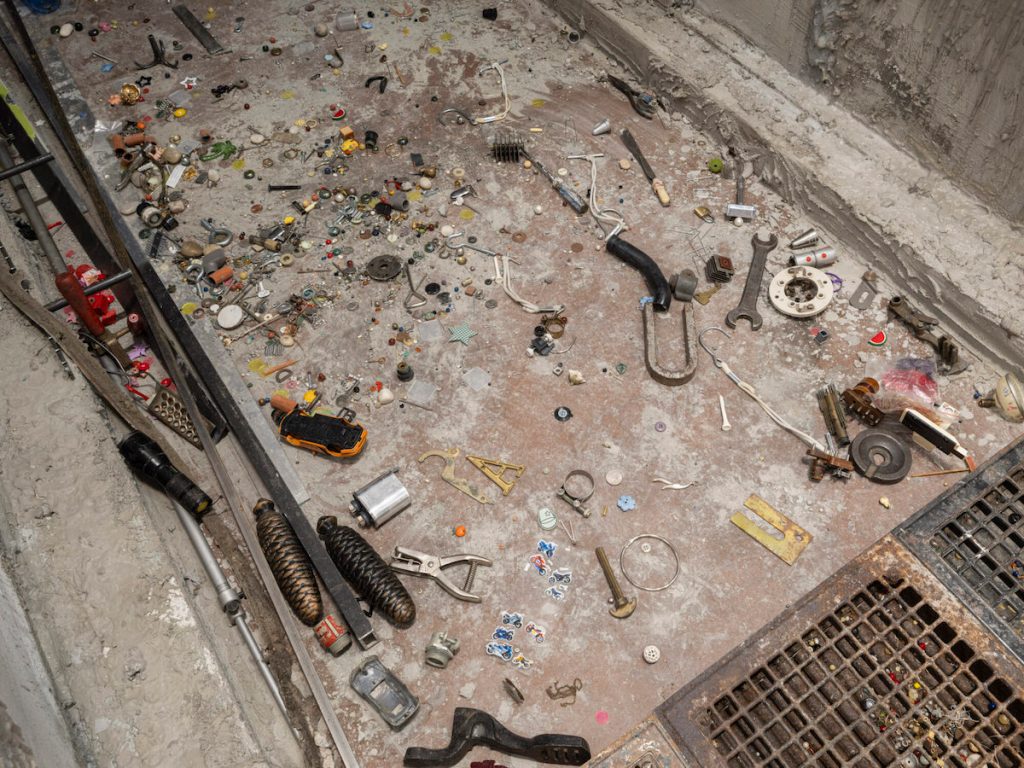Many of the artists in this conceptually rich show, curated by Ruba Katrib with Sheldon Gooch, exhibit a taste for gadgetry that was once worth a pretty penny and has since been relegated to a dump, having now grown obsolete. One unruly assemblage by the wonderful sculptor Ser Serpas features a television set whose back has been removed to reveal a tangle of circuitry; its frame is now delicately balanced on a dirty rolling chair in the corner of a gallery. Jean Katambayi Mukendi also has TV on the brain with Trash TV (2022), a sculpture whose screen is formed not from televisual materials but a truck windshield, to which he has appended pain medications, cassette tapes, a clock, a ruler, and more. Selma Selman is showing a pile of computer towers that she tore open to obtain enough gold to form a single nail, here driven into a wall of PS1 and exhibited as a sculpture unto itself. All these artists subvert the typical use for their found objects, repositioning them so that we might begin thinking about why it’s even possible to find so much refuse at all.
In vastly different ways, each of these works responds to a global economy in which the Global North consumes pricey goods, then ends up with unwanted waste as a byproduct. Often, that trash winds its way backto the Global South, whose citizens find fresh use for it. That much is made explicit in a documentary-style video by Karimah Ashadu called Brown Goods (2020), in which Emeka, a Nigerian migrant residing in Hamburg, can be seen traversing a pile of tires, looking for goods to resell within that German city’s Billstrasse, where the activities of West African migrants like Emeka have been claimed by some as evidence of social rot. “Nobody is really happy seeing all these goods exported to Africa because to the Germans, all these goods are rubbish,” Emeka says in the video, noting that he’s turned to vending trash because he cannot get a job in Germany because he lacks a visa. The video shows that one person’s waste is another person’s financial lifeline.
A man scouring a junkyard as a form of survival sounds like the stuff of sci-fi, but the apocalypse is now in “The Gatherers,” which features many works that look like wreckage—most notably a glorious installation by Tolia Astakhishvili in which one room of PS1 is made to look like a squatter’s nest, with graffitied temporary walls, dusty fire extinguishers, and plugged-in devices of undisclosed function.
Yet this smart show is not all doom and gloom, given that some artists here function more like alchemists, transforming the remainders of a declining world into something new altogether. Miho Dohi, for example, is represented by several sculptures formed from unlike materials assembled to make organ-like forms. In one, coils of fabric and a metal spring come to look like an intestinal tract—something you might find in a healthy, functioning being.
At 22-25 Jackson Avenue, through October 6.
